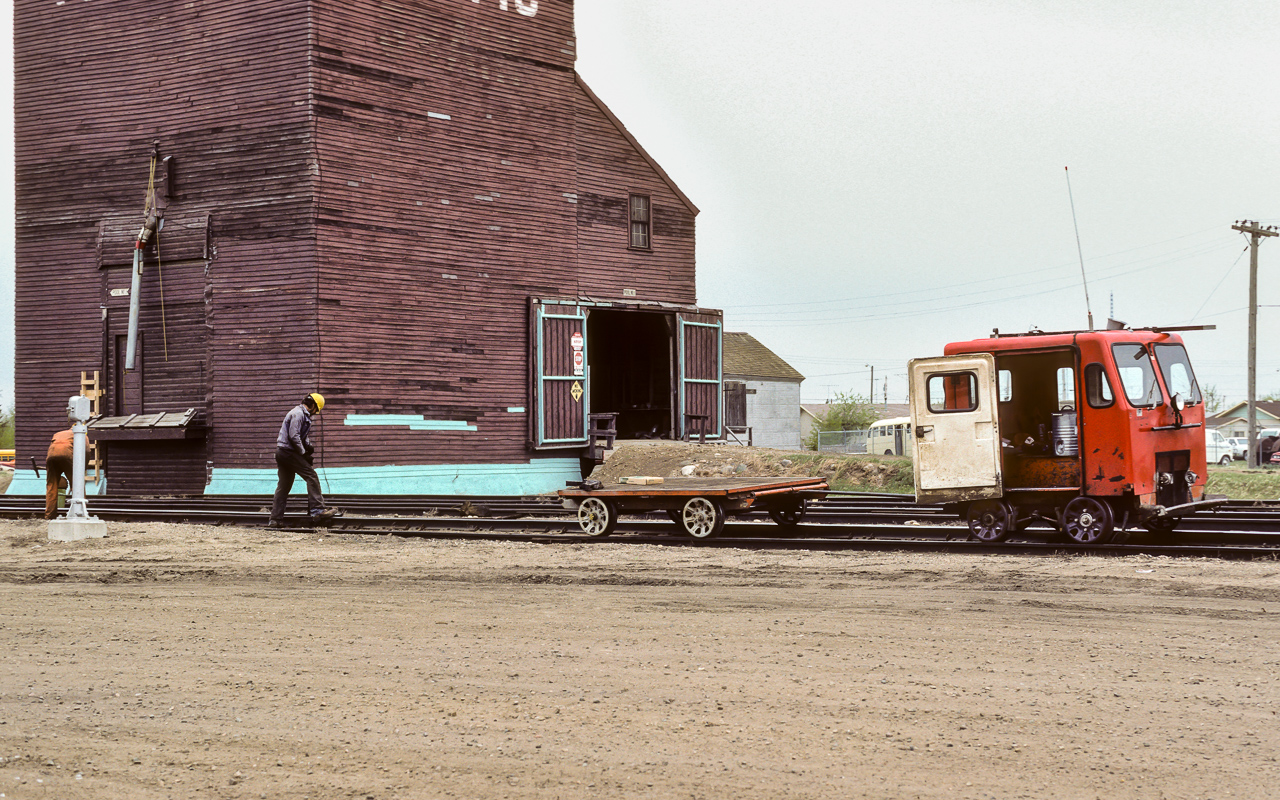
Welcome Visitor. First time here? Like what you see? Bookmark us for when you are bored, and check out 'top shots' and 'fantastic (editors choice)' in the menu above, you won't be dissapointed. Join our community!
click here to sign up for an account today. Sick of this message? Get rid of it by
logging-in here.



At the time I never realized this would eventually be part of a “bygone era” but I should have. This is a nice look back.
Thanks Arnold.

It gives real credibility to the saying “you don’t know what you’ve got until it’s gone. Like yourself, I never thought the work of the sectionmen would change this dramatically in few decades of time. But then again, I just said a few decades. As you mentioned in another post lately, time flies as we get older. Yesterday just doesn’t seem that long ago a.
Neat scene Larry. Quite the rustic looking elevator.
Thanks Jamie. Yes, out of the 3 elevators in town, this one was the most neglected. As sad as it was when they razed them, the elevators either needed to be fixed up or torn done. Good candidates for a fire. I will add, when I was around 14 years old, I watched one of these burn done in Athabasca. We were at least a couple of blocks away watching and the heat was still very intense. An amazing event to watch, huge flames.
A great photo even without the motor car running number! Lots going on in that scene.
Lots going on in that scene.
It appears to me that in addition to doing some light maintenance around a crossing (based on the silver push button box at the left), those two guys will likely also be replacing a fibre insulated joint later in the day as evidenced by the rectangular box on the push car deck. The portable rail expander at the corner of the push car deck (used to expand the rail joint to change the insulated end post) is another give-away of insulated joint maintenance on the days work plan.
Great stuff!
Correct on the crossing Paul. The crossing can be seen in my recent post showing a hopper parked at the elevator immediately to right of this photo. Then obviously the fellow is not tightening nuts, he is loosening them to ready it for a new insulator. While I have you on the line, is there anything to the different coloured rail joiners they use now. I have seen pink and blue for sure. The pink was at a diamond, blue in other places. Do you have any knowledge what the different colours indicate? Thanks for your expert help.
Larry,
I was the Engineering Work Equipment guy in the family so I can’t answer with any authority on your question regarding insulated joint colours. In my time I have seen green, blue, yellow, and pink that I recall.
My brother Terry was the S&C guru (he retired from CN in August 2009 as Senior Manager S&C Eastern Canada). I’ll see if he can enlighten us on the subject and then maybe he can post a comment with the answer. Have a great afternoon. Paul
Other than “compromise joint bars” used to connect different size rail sections, which are required to be spray painted blue, I am not aware of any specific colors for rail joints. The polyurethane coating on the bolted insulated joint bars could be different colors depending on the manufacturer of the insulated joint kits, the same could be said for the joint bars for glued insulated joints. If the insulated joint is spray painted fluorescent pink or orange it is most likely the Signal Guys preparing for some type of track work and are looking to make the insulated joint and the corresponding track wires and connections more visible to the Track Guys and Machine Operators.
Thanks Terry.
Silly me, I was thinking it had something to do with different signalling circuits. One colour for grade crossing circuits, another for track signals, another for diamond signals. As railroads are becoming more electronic as time passes, my thoughts were they needed colours to keep it all sorted out. Your info hushed that theory.